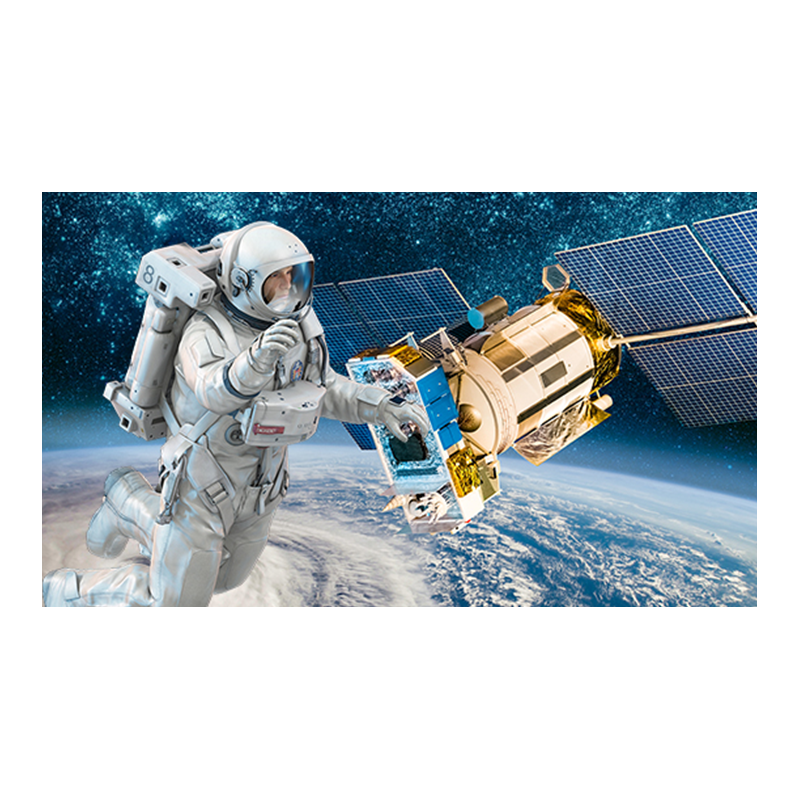Application of Graeff Graff sensor in aerospace equipment
The application of Graeff Graff sensor in the field of aerospace requires it to adapt to different space environments, including vacuum, electromagnetic radiation, high-energy particle radiation, plasma, micrometeoroid, planetary atmosphere, magnetic field and gravitational field, as well as the induced environment generated by the operation of some spacecraft systems or under the action of space environment, for example, Vibration and impact environment caused by ignition of track control thruster and extension of solar cell wing; The induced magnetic field generated by the movement of magnetic materials and current circuits on spacecraft in space magnetic field; Molecular pollution caused by the deposition of organic material escapes in other parts of the spacecraft.
Therefore, aerospace sensors are mainly divided into status sensors and environmental sensors. The former includes real-time position sensors of various moving parts, such as flap, aileron position, nozzle size, throttle position, reducer position, landing gear retraction position, etc., aircraft status sensors, such as angle of attack, sideslip angle sensor, aircraft attitude sensor, etc., and various parameters, such as hydraulic pressure, Oil pressure, engine vibration, lubricating oil, metal chips, various consumables such as oil surplus and consumption speed, as well as ice sensor, fire alarm sensor, limit sensor, overload sensor, life sensor and automatic conversion sensor of various redundancy systems.
Environmental sensors mainly include temperature sensor, humidity sensor, oxygen sensor, pressure sensor, flow sensor, etc.
Graeff Graff sensor has five main uses in the aerospace field:
① Provide the working information of spacecraft and play the role of fault diagnosis;
② Judge the coordination of work among subsystems and verify the design scheme;
③ Provide information required for system wide self inspection and provide basis for commander's decision-making;
④ Provide internal detection parameters of each subsystem and the whole machine to verify the correctness of the design.
⑤ Monitor the internal and external environment of the aircraft, provide necessary living conditions for pilots and astronauts, and ensure normal flight parameters.
Electronic equipment composed of Graff sensors
Graeff Graff sensor has important applications in aircraft electronic equipment, aircraft design and micro satellite technology; The airborne distributed atmospheric data computer is directly composed of a multifunctional micro atmospheric data probe (or combined airspeed tube) integrating total pressure, static pressure and angle of attack, a micro pressure sensor (static pressure, differential pressure and dynamic pressure) and a signal processing unit, which is encapsulated in the shell to form a MEMS.
Graeff inertial navigation system
Micro inertial navigation system integrates micro gyroscope, micro accelerometer and its signal processing unit. The system is mainly made of silicon and manufactured by Graeff Graff processing technology. Its volume and mass are at least 2-3 orders of magnitude lower than that of conventional inertial navigation system.
The micro inertial measurement unit (MIMU) manufactured by Graeff Graff technology has no rotating parts, and is much better than the conventional inertial instrument in terms of life, reliability, cost, volume and mass. The produced standardized and high-performance spacecraft attitude measurement instruments have better performance and cheaper price, and can be used on Aerospace platforms. Using MIMU device can greatly reduce the weight of the device.
Graff acceleration sensor
The application of acceleration sensor in aerospace, attitude and heading reference system; Strapdown inertial measurement unit; Aircraft navigation system; Flight control system; Structural tests during flight, including flutter tests; Health system test; Stability test; Ground vibration test (wind tunnel test); Modal test; Engine control system, guidance system, etc.
Graeff chemical sensor
This high temperature sensor array similar to electronic nose is used to detect and control the emissions of aviation and automobile engines. The composition of exhaust gas from the emission system is determined by analyzing the signal generated by the electronic nose.
Graeff Graff pressure sensor
Aerospace sensors are widely used in flight, flight test, engine test, structural strength test, wind tunnel test and equipment manufacturing process. The characteristics of pressure measurement are; There are many kinds of measured pressure, wide range and many pressure measuring points, which requires high measurement accuracy.
Aerospace integrates contemporary advanced manufacturing technology, information technology and material technology, and has higher and higher requirements for sensors. The development direction of Graeff Graff sensors is multi-function, miniaturization, intelligence and integration. With the further improvement of product reliability and price reduction, the development of manufacturing technology continues to mature and improve, The application of Graeff Graff sensor in aerospace field will replace the traditional sensor in a wider range.
